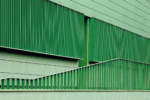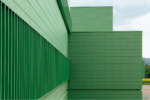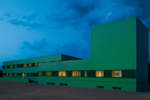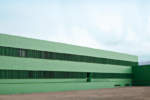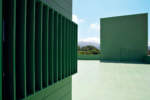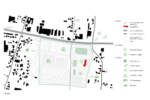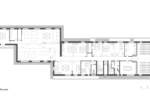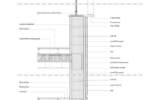architect: Pietro Carlo Pellegrini
location: Lucca, Italy
year: 2010
The new technological district of Lucca is located in the eco-sustainable district dedicated to tertiary activities, equipped with every facility and designed to combine trade fair activities and technological transfer. The Technological District of Lucca is the first example in Tuscany of a structure at the service of innovation, built according to the latest green building criteria.
A project capable of accentuating the values of a high quality lifestyle and environment, along with the promotion of economic development, which also vaunts an area dedicated to furthering local development by supporting activities linked to the society of information and knowledge. To further the advanced experiences and expertise existing in or easily relocated to Lucca and to create centres of expertise on innovation and technological transfer aimed at improving competitiveness and creating new high tech businesses. The following macro-areas have for the moment been identified within the centre: 1. Information & Communication Technologies; 2. Virtual environments for industrial applications and for cultural heritages; 3. Green architecture and green building;
The purpose of the project has been to reduce the environmental impact to a minimum, and the replacement of the old buildings with new energy-efficient ones has thus been prioritized, also to avoid building on new areas. The new centre is conceived as a green port, as a departure and arrival point of cycle tracks and footpaths accessible to everyone: a park south of the city of Lucca, which may favour relations between the companies and the local population. The design has pursued the following objectives: 1. Eco-sustainability; 2. Respect for the quality of the environment surrounding the buildings, thus reducing pollution to a minimum; 3. Bio-compatibility and healthy, comfortable equipment aimed at guaranteeing the best possible living conditions of those who use the buildings; 4. Sustainable building that save energy and non-renewable resources, for instance by means of walls and floor slabs formed of layers of materials which guarantee high insulating properties. An ideal orientation of the buildings, to fully exploit solar thermal energy in winter and to control thermal radiation in summer, the use of sunscreens that prevent overheating of the rooms in summer and the exploitation of sunlight to reduce the use of artificial light to a minimum; Reduction of the building’s annual electricity consumption through the use of photovoltaic panels and, finally, reduction of the consumption of non-potable hot water for irrigation and bathrooms through the use of tanks for the collection of rainwater.
5. Energy requirement – the energy requirement of the new building will be 60% lower than the limits established by the applicable regulations on sustainable building, and the need for clean energy is met by the use of a methane-powered cogeneration micro-turbine, in addition to the installation of photovoltaic panels on the roofs of the buildings.
Pietro Carlo Pellegrini was born in Lucca in 1957. In 1983 he took his Architecture degree in Pescara and from 1985 came back to Lucca. In his Architecture the modernity of the project does not prescind from a deep sensitivity to the pre-existent. He teached in some Architecture school like Genova, Delft (NL), Napoli, Venezia, Ferrara and Siena. He recived some prizes: Andil Opera Prima prize, Dedalo prize and the international prize ECOLA. He was nominated for the Piranesi prize, and was given of the Honour Mention at Triennale of Milano with a Golden Medal for Architecture. He took part in Biennale of Venice in 2002, 2004 and 2010. Main works: Museum of Cattedrale in Lucca, its Cloister, Pilgrims' Guest House and Monumental Ossuary in S.Gemma Monastry in Lucca, “Palex”, “Le Gemelle” and “Blu” buildings in Lucca, Lazzareschi Foundation in Porcari, the National Museum of Comic and Representation in Lucca, Historical Museum of Resistance in S. Anna di Stazzema. You can find his works mainly on the volumes: Hotel San Marco in Lucca, Museum of the Cattedrale in Lucca, Pietro Carlo Pellegrini – Architecture and Projects 1992-2007.



